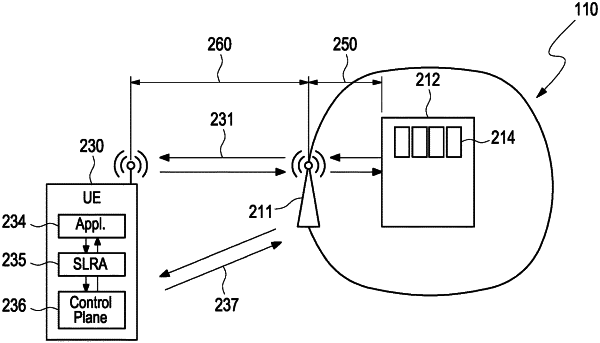| CPC H04W 72/51 (2023.01) [H04W 24/08 (2013.01); H04W 28/24 (2013.01); H04W 72/53 (2023.01); H04W 72/543 (2023.01)] | 15 Claims |

|
1. A method, comprising:
a) provisioning, at an end user device which is located in a cell of a wireless network, at least one latency critical application and a service layer radio application (SLRA) for communication with a scheduler associated with a base station of the wireless network, the base station serving the cell;
b) transferring transmission specific data in real time between the at least one latency critical application and the scheduler via the SLRA, wherein the SLRA is implemented on both the end user device and the scheduler; and
c) optimizing allocation of resources in the cell by taking into account current status and operation requirements of the at least one latency critical application and/or optimizing current use of the resources in the cell by using the transmission specific data for adapting the at least one latency critical application in real time to current conditions on the cell;
wherein the scheduler and the at least one latency critical application iteratively exchange information to negotiate an optimal adjustment of the at least one latency critical application to current data transmission conditions in terms of spectrum efficiency and fulfillment of the current operation requirements of the at least one latency critical application within possible operating points of the at least one latency critical application.
|